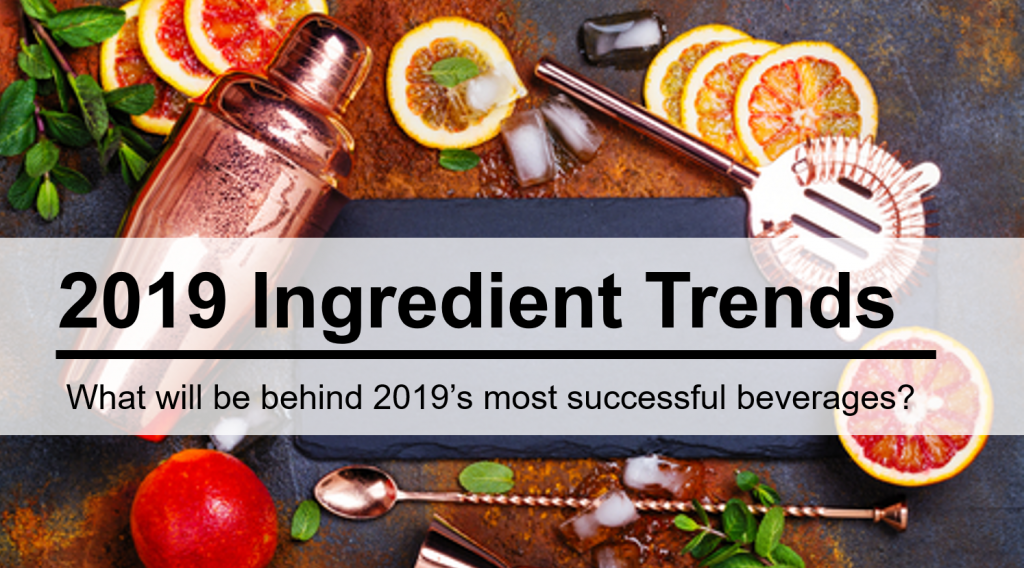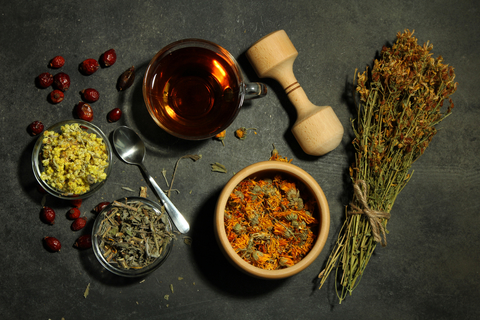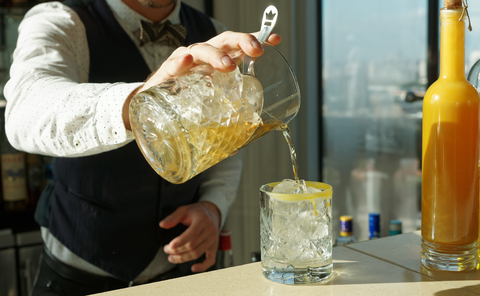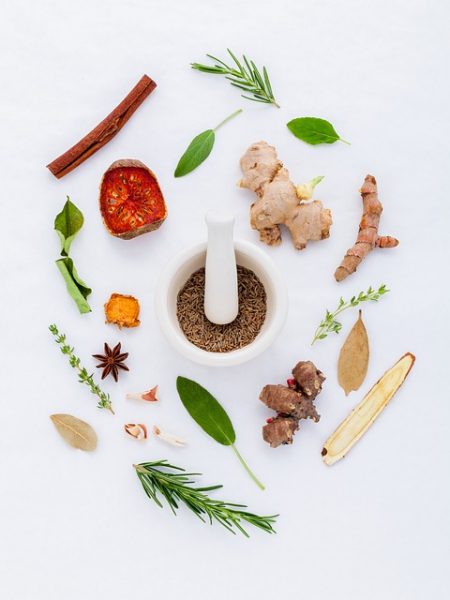How To
What Ingredient Trends Will Be Behind 2019’s Most Successful Beverages?
 The beverage space is evolving at a rapid pace as innovation and developments are rolled out to meet customers’ ever-changing tastes and preferences. There are marked shifts in the ways consumers think about their beverage choices and a resulting change in the types of ingredients that are being incorporated into those beverages. Here are some of the ingredient trends we expect to impact the formulation of 2019’s most successful beverages.
The beverage space is evolving at a rapid pace as innovation and developments are rolled out to meet customers’ ever-changing tastes and preferences. There are marked shifts in the ways consumers think about their beverage choices and a resulting change in the types of ingredients that are being incorporated into those beverages. Here are some of the ingredient trends we expect to impact the formulation of 2019’s most successful beverages.

Niche and Premium Ingredients
As each category in the beverage space becomes more saturated, companies are seeking to differentiate with premium and niche ingredients. From premium sweeteners such as honey or more flavor-neutral, high-potency options, to specialty botanicals, beverage creators are looking to incorporate elements of rarity and exclusivity into their formulas.
Sourcing continues to see a push for cleaner-label ingredients and there is growing demand for wild and lesser-cultivated options.
Fanciful, blend, and origin callouts are also becoming the norm, where blueberry is being replaced by mountain or wild blueberry, and lime by key lime or kaffir lime. Consumers are also increasingly interested in more exotic flavors. Indian-influenced flavors like tamarind and turmeric are becoming more popular, while tropical flavors like dragon fruit, lychee, rambutan, and yuzu continue to be sought-after flavors.
Local and Craft
 There has been a marked shift over the past several years in favor of locally sourced, handcrafted beverages over corporately owned, mass-produced brands.
There has been a marked shift over the past several years in favor of locally sourced, handcrafted beverages over corporately owned, mass-produced brands.
Nostalgia for ‘50s cocktail culture, combined with a population of young adults who are more interested than ever in the “story” and values of the brands they choose to shop from, has resulted in a surge of craft cocktails incorporating new and exciting ingredients into classic drinks of the past like Moscow Mules and Manhattans.
Botanical mixers, craft bitters, unusual aromatics, and extravagantly designed packaging are being used to bring these classics into the modern day. More than ever, consumers are ingredient conscious–even when it comes to their cocktails–and see their time to eat and drink as a time to take care of themselves and slow down. There’s a focus on natural and organic ingredients they can feel good about, as well as locally sourced ingredients that may match their values.
Sensory Experiences
The growing need to set a product apart on shelves combined with advancements in science and technology has given rise to beverage and food products that provide an unusual or stimulating sensory experience. To stimulate senses other than taste, manufacturers are creating packaging with distinctive sound (think the “pop” of a Snapple cap opening), scent (encapsulating scents within product seals), and touch (packaging with dynamic textures). Fruit pulp, chia seeds, and tapioca pearls are also popular additions to add a textural element to beverages. There’s also a focus on ingredients that provide a sensory experience like heating, cooling, or tingling. Ingredients like mint, capsicum, ginger, and menthol are being used to provide consumers with a more stimulating beverage experience.
Traditional Medicinal Ingredients
 Those looking for healthy beverages in 2019 are more likely to see beverages containing ancient, traditional medicinal ingredients alongside traditional supplement ingredients. A larger portion of people are embracing more traditional herbal health practices and ingredients, and recipes that were popular centuries ago are now seeing renewed popularity. Adaptogenic ingredients such as mushrooms, ashwagandha, maca, and kava are all being seen more frequently as inclusions in functional beverages. Cottage-industry recipes like fire cider, kombucha, and switchel are also continuing to move from the kitchen to the store, along with herbal bitters, tinctures, and tonics based off of old-world recipes. Because of the strong and sometimes unpleasant flavor of many of these ingredients, lots of work is being done in the realm of flavor modification to help mask bitter and earthy notes and enhance sweetness without additional sugar.
Those looking for healthy beverages in 2019 are more likely to see beverages containing ancient, traditional medicinal ingredients alongside traditional supplement ingredients. A larger portion of people are embracing more traditional herbal health practices and ingredients, and recipes that were popular centuries ago are now seeing renewed popularity. Adaptogenic ingredients such as mushrooms, ashwagandha, maca, and kava are all being seen more frequently as inclusions in functional beverages. Cottage-industry recipes like fire cider, kombucha, and switchel are also continuing to move from the kitchen to the store, along with herbal bitters, tinctures, and tonics based off of old-world recipes. Because of the strong and sometimes unpleasant flavor of many of these ingredients, lots of work is being done in the realm of flavor modification to help mask bitter and earthy notes and enhance sweetness without additional sugar.
Cross-Category Ingredients
Traditional beverage categories are seeing hybridization with components from another category and we expect that trend to continue as beverage creators look outside of their traditional product lines to create new offerings. Water has evolved from hydration to functional with the addition of nutrients, electrolytes, protein, and vitamins. The increasing popularity of hard seltzer is an example of the wide acceptance of cross-category beverages. Even Coca-Cola, who has traditionally maintained a solid focus on non-alcoholic beverages, has begun crossing categories with the launch of a lemon-flavored alcoholic drink in Japan. As seen with previously unavailable options such as hemp-derived products, this hybridization will become even more common.
Function-Focused
 Consumers are increasingly turning to functional beverages in addition to, or as a replacement for, supplements to obtain beneficial ingredients in their diets. Educated consumers are seeking out beverage ingredients with benefits that fulfill their individual needs. Nootropics, antioxidants, adaptogens, and “energy boosters,” such as MCT, CBD, vitamin C, and citrulline, are being perceived as beneficial.
Consumers are increasingly turning to functional beverages in addition to, or as a replacement for, supplements to obtain beneficial ingredients in their diets. Educated consumers are seeking out beverage ingredients with benefits that fulfill their individual needs. Nootropics, antioxidants, adaptogens, and “energy boosters,” such as MCT, CBD, vitamin C, and citrulline, are being perceived as beneficial.
New or novel ingredients are more quickly adopted than in the past due to easy access to information via the internet. Consumers are looking at not only what is in the bottle or can, but what those specific ingredients are doing for them. This trend is present in the emergence of wellness shots -small bottles containing doses of various herbs and ingredients with different health and wellness benefits.
Original article was published in Beverage Industry Blog.









